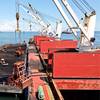India Issues New Guidelines for Investment in Ports
India's Ministry of Shipping has undertaken a diverse set of initiatives as part of its drive to boost profitability across major Indian ports.
One major initiative is to improve the returns earned on treasury investments by the ports for pension, provident and surplus funds. Across all major ports, these funds add up to around INR 33,000 crore (USD 4.8 billion), yielding interest of around INR 2,700 crore (USD 394 million)
Looking for ways to push this amount further, the Ministry has realized an opportunity to improve returns by INR 150 crore (USD 22 million) or more through a strategic shift in its guidelines for provident and surplus funds.
As per the most recent guidelines, major ports have been investing their provident and surplus funds in the fixed deposits of nationalized banks, earning returns in the range of 5.5 to 8 percent. However, many PSUs have enjoyed significantly better returns.
For instance, ONGC earned 8.4 percent returns through Oil Corporation of India and Government of India special bonds; RECL earned 10 to 11 percent through Tier I bonds of the UP Power Corporation Limited and SBI bonds.
Realizing the potential to earn higher returns, the Ministry of Shipping has evaluated its recommended investment pattern in comparison to the frameworks followed by other PSUs and government bodies.
After as a detailed study of investment options available and their achieved performances, the Ministry of Shipping has issued fresh guidelines to all the major ports on the investment of provident funds based on EPFO (Employees Provident Fund Organization) guidelines from the Ministry of Labour and Employment in 2015, and on the investment of surplus funds based on guidelines from the Department of Public Enterprises (Ministry of Heavy Industries & Public Enterprises) in 2017.
These new guidelines are expected to increase the returns of provident and surplus funds by 1 to 1.5 percent across ports, adding around USD 22 million annually to the current earning figures.
With the new guidelines, many ports, including Kandla, Goa, JNPT, New Mangalore and Visakhapatnam are all set to switch the investment pattern with higher rate of return. The financial benefit estimated would show up in the books of accounts of major ports from 2018–19.
Treasury investments at India’s 12 major ports─ Kandla, Mumbai Port Trust, JNPT, Goa, New Mangalore, Cochin, Tuticorin, Chennai, Ennore, Vishakhapatnam, Paradip, and Kolkata/Haldia─ are governed by Section 88 of the Major Ports Trust Act, 1963. The Act mandates that investments pertaining to pension, provident and surplus funds adhere to the guidelines issued from time to time by the Central Government, i.e., the Ministry of Shipping or Ministry of Finance.











